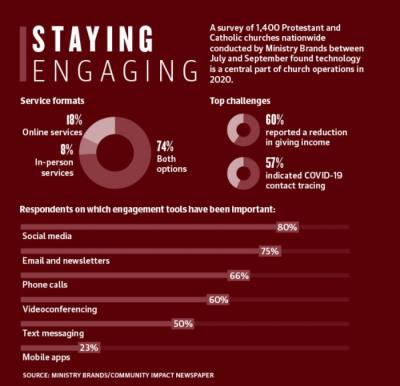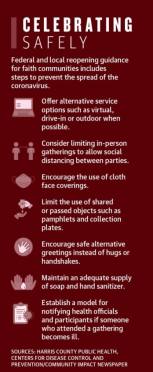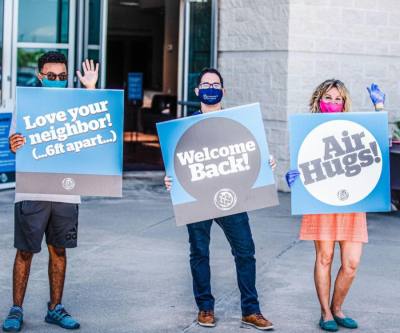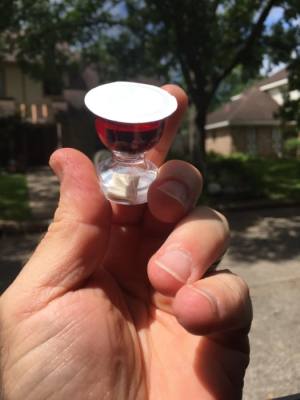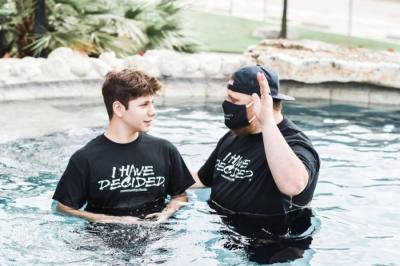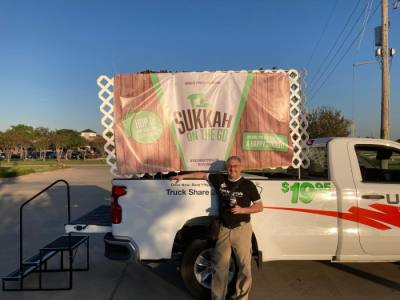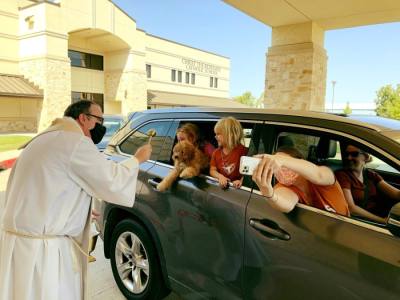Vivian Mueller, the director of business operations at The Family of Faith Lutheran Church in Copperfield, said most members were already accustomed to precautionary measures when the church reopened in late May because the pandemic has affected other aspects of life as well.
“It’s kind of the new normal now—taking temperatures and wearing a mask,” she said. “A lot of them were happy to go back just because ... in-person [service] is just so much different than watching it from home.”
There were about 80 COVID-19 cases confirmed countywide when Harris County Judge Lina Hidalgo issued a stay-at-home order March 24, which mandated places of worship operate remotely. Gov. Greg Abbott signed an executive order a week later, deeming religious activities essential and authorizing socially distanced services, although most local churches at the time opted to continue streaming services for the next several weeks as case counts surged.
“It’s one thing when you make a decision for yourself. It’s another thing when you’re making a decision for 1,500-1,800 people and trying to take everything into consideration for what’s best, what’s wise, what’s cautious,” said Bob Reed, the lead pastor of CyLife Church, which reopened its doors in late September. “It has nothing to do with trusting God; I think he also tells us to use our brains and use wisdom and be respectful.”
By the end of November, the county’s COVID-19 case count had exceeded 190,000 since March, but like businesses and schools, churches have adapted to operate in new ways.
In addition to offering alternative service options, Harris County Public Health urges places of worship to encourage face coverings, social distance and limit shared objects.
Officials with Harris County Public Health said faith leaders should consider metrics including COVID-19 case numbers, hospitalizations and positivity rates when deciding whether and how they should hold in-person activities.
Dizhi Marlow, a communications specialist with HCPH, said virtual, outdoor and drive-in services are some of the best practices the department has seen during the pandemic. While she said places of worship has not been identified as a significant source of COVID-19 cases, exclusively virtual services are the safest option until the county’s COVID-19 threat level system is reduced from the "severe" level.
“As our partners in health, HCPH relies on its faith leaders to uphold COVID-19 prevention measures and set an example in caring for the health of the communities they serve,” Marlow said in an email.
According to a national survey from Ministry Brands, a group of church software programs, about 18% of services were exclusively online and 8% were exclusively in person between July and September. During that time, however, most congregations had the choice of either option.
Rabbi Levi Marinovsky, who leads local Jewish nonprofit Chabad of Cypress, said people tend to cling to their faith in times of crisis as a source of hope. Throughout the pandemic, slowing down and connecting with like-minded believers has provided strength for those enduring challenges such as unemployment, he said.
“When people are busy with their life, they don’t stop or pause to ask those questions: What are their priorities? What do they value? What do they feel is their purpose and meaning?” Marinovsky said.
Embracing change
While some area congregations were already posting services online before the pandemic, this was new territory for churches such as Shine Bible Fellowship Church near Beltway 8. Lead pastor Jaron Jones said after about three months of exclusively online services, he noticed a gradual drop in engagement from members.
“We believe there is serious online Zoom fatigue. Everybody’s online [for work]; kids are online for school,” he said. “I do believe that for a period of time, the church can sustain online. However, it’s just really difficult beyond a short amount of time.”
Shine Bible Fellowship reopened in October after planning to do so twice ahead of COVID-19 case increases.
Jones said a church provides a sense of community and belonging and that finding encouragement is tough without in-person interactions. He said he is hopeful the Christmas season brings renewed energy as the church plans to incorporate more creative elements in a series called The New Nativity.
At Community of Faith in Hockley, Creative Arts Director Sheree Howard said one of the staff’s biggest challenges was measuring church members’ readiness to return. The campus reopened in September with social distancing in mind.
In addition to continuing to offer online streaming and space in between parties in the primary worship space, she said the church designated a space for immunocompromised attendees where masks are required to ensure their comfort.
“You can’t really know how every individual in your congregation is going to respond and react to coming back to church,” Howard said. “We can’t know how people feel, so what we’ve taken the responsibility of is making sure that we offer a safe place so that whenever they are ready, they can come back.”
Despite the challenges COVID-19 has presented, religious leaders in Cy-Fair continue to find ways to meet community needs by hosting food drives and blood drives. Most churches also have protocols in place to reach out to members to assess needs—whether through small groups or by individual contact.
Marinovsky said he contacted all members of his organization, ensuring no one was overlooked. Activities were virtual from March through September, but the organization innovated when celebrating Jewish traditions.
For instance, the group distributed “Shabbat to-go” and “Passover to-go” packages with essential food items and reading materials in lieu of gathering for communal dinners. While these efforts increased his workload, Marinovsky said he knew he had to adapt rather than eliminate programming during this time of need.
“We wear a mask and stay safe, but at the same time, we remember it’s God who keeps us safe,” he said. “When we do charity and when we care about others and share with others, that is one of the surest ways that we can be sure of God’s compassion and care for us.”
Keeping the faith
The Rev. Sean Horrigan, pastor at Christ the Redeemer Catholic Church, said he continues to preach the message of hope during a time of darkness as parishioners have experienced anxiety throughout the year. Counseling services are also available on-site for those dealing with emotional, mental and spiritual adversities.
“We always want to provide a listening heart and a place of refuge that they can come and talk to someone ... and for us as Catholics, also providing the sacraments of the church—Holy Communion, reconciliation—just the rhythm of our Catholic life,” he said. “I think when people were out of that rhythm, they disconnected.”
Small group meetings within the congregation at CyLife Church are the key to connection, Reed said, as most groups have continued to meet via Zoom or in outdoor settings. Others have gotten comfortable not going to church and staying home to watch services online, if at all, he said.
“I hear all the time, ‘I can’t wait until it goes back to normal.’ I don’t really think it’s going to, and I’m not sure what the new normal is yet,” he said. “We were in the midst of looking at having to build more buildings, build new office space because we were running out of space and all of a sudden, COVID put a major halt on that."
Even so, Reed said the church has gained new members and financial contributions remain fairly steady despite the pandemic, allowing for the continuance of charitable efforts, counseling and recovery ministries.
As the holiday season approaches, faith leaders said they are preparing for a spike in attendance, although it is difficult to estimate crowd sizes. To maintain distance, Community of Faith is planning five Christmas Eve services in two days, and Christ the Redeemer has seven Mass services scheduled with overflow space across two days.
“There’s a great tradition of people coming to church on Christmas,” Horrigan said. “They may not even be Catholic ... or maybe they’re not actively practicing their faith every week, but they still come back or come to visit family at Christmas.”
Leaders from The Family of Faith, Shine Bible Fellowship and Christ the Redeemer—none of which previously streamed services online—agreed the new feature is here to stay beyond the pandemic as it expands their reach.
Still, uncertainty looms as budgeting and other plans for 2021 are underway, but religious leaders said their faith remains the same despite church looking different. Jones said he believes the pandemic has forced society to become more flexible, and the church will keep adapting to meet the community’s needs.
“Everything’s so different and so uncertain,” he said. “[Maybe your] favorite restaurant’s not open; grocery store hours are different, and they may not have all the things they used to have. Taco Bell has [limited] their menu. I think we’re just learning to be more flexible and not so entitled.”





